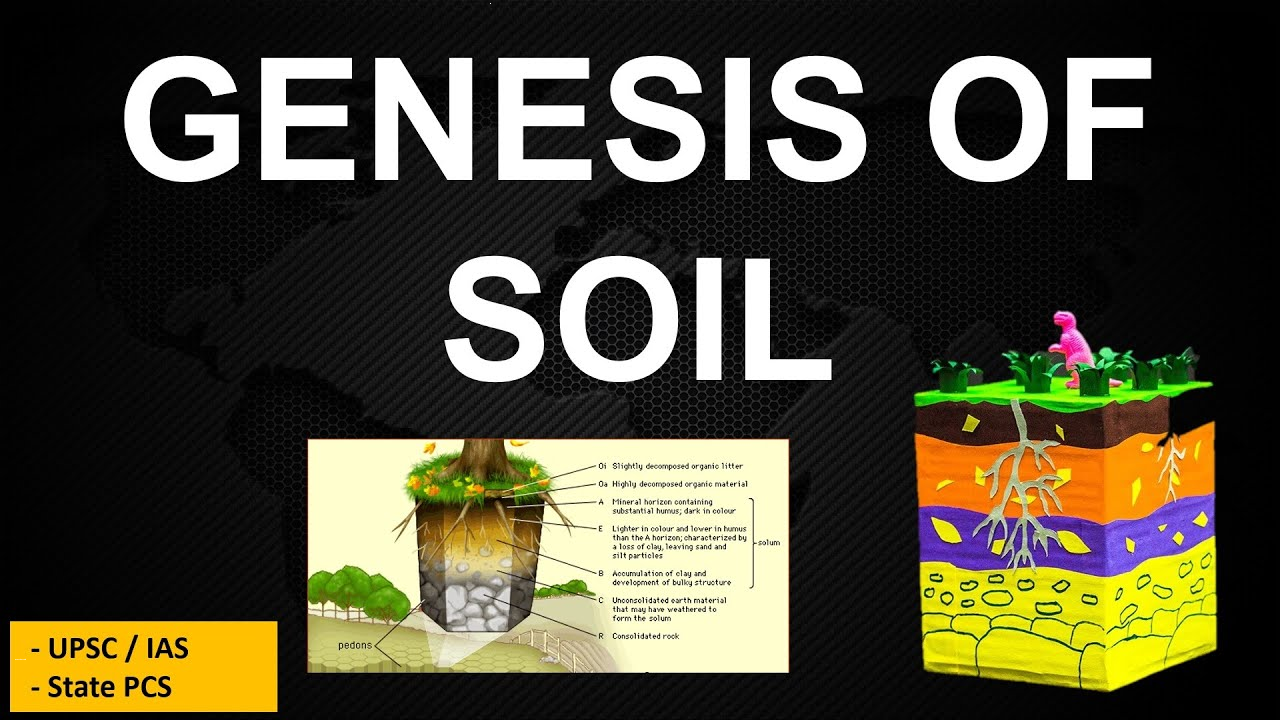Genesis of soils
Soil is a vital component of the Earth’s ecosystem, supporting the growth of plants and the cycling of nutrients. The formation of soil is a complex process that is influenced by a wide range of factors, including climate, geology, and vegetation
Factors Influencing Soil Formation
Soil formation is influenced by a wide range of factors, including climate, parent material, topography, biota, and time. These factors interact to influence the physical and chemical properties of soils.
Climate is one of the most significant factors influencing soil formation, as it determines the amount and distribution of precipitation, temperature, and solar radiation. These factors influence the rate of weathering, erosion, and the growth of vegetation, all of which play a role in the formation of soil.
Parent material refers to the underlying geological material that soils are derived from. Parent material can influence the physical and chemical properties of soils, such as their texture, mineral composition, and nutrient content.
Topography refers to the shape and slope of the landscape. Topography can influence soil formation by influencing the movement of water, nutrients, and sediment across the landscape. Steep slopes, for example, are more prone to erosion, which can influence the development of soils.
Biota refers to the living organisms that inhabit the soil and the surrounding ecosystem. Biota can influence soil formation by influencing the cycling of nutrients, the structure of soil, and the amount and type of organic matter present.
Time is also an important factor in soil formation. The longer a soil has been developing, the more developed it is likely to be, with more distinct layers and more developed physical and chemical properties.
Classification of Soils
Soils are classified based on a wide range of factors, including their physical and chemical properties, and the factors that influence their formation. The most widely used classification system is the Soil Taxonomy system, which was developed by the United States Department of Agriculture (USDA).
Soil Taxonomy classifies soils based on their physical and chemical properties, including texture, structure, color, and mineralogy. Soils are also classified based on the factors that influence their formation, including climate, parent material, topography, and biota.
Soils are classified into twelve orders in the Soil Taxonomy system, with each order representing a distinct set of soil properties and formation factors. The twelve orders are:
- Entisols: These soils have a lack of horizon development and are typically found in young soils or areas with frequent disturbances.
- Inceptisols: These soils have a weakly developed horizon and are found in areas with moderate soil development.
- Andisols: These soils are derived from volcanic ash and have unique physical and chemical properties.
- Gelisols: These soils are found in areas with permafrost and are characterized by the presence of frozen soil layers.
- Histosols: These soils are organic-rich and are typically found in wetland areas.
- Aridisols: These soils are found in dry, arid areas and are characterized by low organic matter content.
- Mollisols: These soils are found in grassland areas and are characterized by a thick, dark-colored surface horizon.
- Alfisols: These soils are found in areas with moderate to high rainfall and are characterized by a subsurface clay horizon.
- Ultisols: These soils are found in areas with high rainfall and are characterized by a subsurface clay horizon and low base saturation.
- Spodosols: These soils are found in areas with high acidity and are characterized by a subsurface layer of iron and aluminum compounds.
Oxisols: These soils are found in tropical regions and are characterized by a highly weathered, deep profile. - Vertisols: These soils have a high content of expandable clay and are characterized by high shrink-swell potential.
Soil Distribution
Soils are distributed across the planet in a variety of different patterns. Soil distribution is influenced by a wide range of factors, including climate, parent material, topography, and biota.
Zonal soils are soils that are found in areas where the climate and vegetation are stable over long periods of time. These soils develop under the influence of natural processes and are typically classified based on their climate and vegetation. Examples of zonal soils include mollisols in grassland areas, alfisols in deciduous forests, and spodosols in coniferous forests.
Intrazonal soils are soils that are found in areas where the climate and vegetation are unstable or transitional. These soils are typically classified based on their parent material and topography, rather than their climate and vegetation. Examples of intrazonal soils include alluvial soils along rivers and estuaries, and colluvial soils on steep slopes.
Azonal soils are soils that are not strongly influenced by the local climate, vegetation, or parent material. These soils are typically found in areas with unique geological or environmental conditions, such as soils on rocky outcrops or soils in wetland areas.


